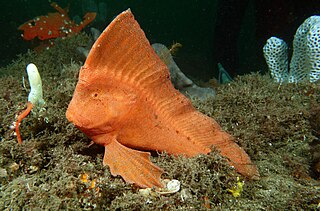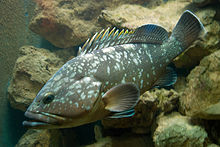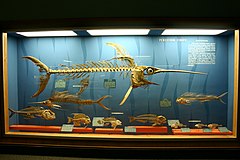
The red velvetfish is a species of marine ray-finned fish, it is the only species in the monotypic genus Gnathanacanthus and monogeneric family Gnathanacanthidae. This species is endemic to the inshore waters of western and southern Australia.

Gasterosteoidei is a suborder of ray-finned fishes that includes the sticklebacks and relatives, the 5th edition of Fishes of the World classifies this suborder within the order Scorpaeniformes.

Rhamphocottidae is a family of ray-finned fishes belonging to the superfamily Cottoidea, the sculpins. The species in this family occur in the North Pacific Ocean.

Scorpaenoidei is a suborder of ray-finned fishes, part of the order Scorpaeniformes, that includes the scorpionfishes, lionfishes and velvetfishes. This suborder is at its most diverse in the Pacific and Indian Oceans but is also found in the Atlantic Ocean.

Hexagrammidae, the greenlings, is a family of marine ray-finned fishes belonging to the suborder Cottoidei in the order Scorpaeniformes. These fishes are found in the North Pacific Ocean.

Peristediidae, the armored sea robins or armoured gurnards, is a family of ray-finned fishes belonging to the suborder Platycephaloidei in the order Scorpaeniformes. They are found in the deep water in the tropical and warm temperate of the world's oceans.

The Australian prowfishes are a small family, the Pataecidae, of ray-finned fishes classified within the order Scorpaeniformes. Australian prowfishes are distinguished by a long dorsal fin that begins far forward on the head, forming a "prow" shape, and extends all the way to the caudal fin. They lack scales and pelvic fins.

Little velvetfishes or simply velvetfishes are a family, the Aploactinidae, of marine ray-finned fishes classified within the order Scorpaeniformes. They are small fish that have skin with a velvet texture. They live on the sea bottom close to the shore, at depths of up to 100 metres (330 ft). They are found in the Indo-Pacific region.

The Trichodontidae, or sandfishes, are a small family of ray-finned fishes from the order Scorpaeniformes. The species in this family are found in the North Pacific Ocean.

The Zaniolepididae is a family of marine ray-finned fishes classified within the suborder Cottoidei of the order Scorpaeniformes. They are found in the North Pacific Ocean.

Kanekonia is a genus of marine ray-finned fish, velvetfishes belonging to the family Aploactinidae. The genus is found in the western Pacific and eastern Indian oceans.
The deceitful velvetfish is a species of marine ray-finned fish, a velvetfish, belonging to the family Aploactinidae. This species is endemic to the oceans around Australia. This species is the only known member of its genus.
Pseudopataecus is a genus of marine ray-finned fish, velvetfishes belonging to the family Aploactinidae. This genus is endemic to the waters around Australia.
Ptarmus is a genus of marine ray-finned fish, velvetfishes belonging to the family Aploactinidae. This genus is endemic to the waters of the western Indian Ocean.
Sthenopus is a monotypic genus of marine ray-finned fish, a velvetfish belonging to the family Aploactinidae. It is found in the western Pacific Ocean where it is known from China and Thailand. The only known member of this genus is Sthenopus mollis.

Platycephaloidei is a suborder of ray-finned fishes, part of the order Scorpaeniformes, and includes the flatheads, ghost flatheads and sea robins.

Easchmeyer nexus is a species of marine ray-finned fish; it is the only species in the monotypic genus Eschmeyer and monogeneric family Eschmeyeridae. This fish is only known from the Pacific Ocean, near Fiji.

The whiskered prowfish is a species of marine ray-finned fish, an Australian prowfish belonging to the family Pataecidae. It is endemic to the coastal waters of southern Australia. This species is the only member of the monotypic genus Neopataecus.

Cottoidei is a suborder of ray-finned fishes which, according to the 5th edition of Fishes of the World, is placed within the order Scorpaeniformes, alongside the scorpionfishes, flatheads, eelpouts, sticklebacks and related fishes.

Acanthuriformes is an order of ray-finned fishes, part of the Percomorpha clade. Some authorities place the fishes in the order within the Acanthuriformes in the suborders Acanthuroidea and Percoidea of the order Perciformes.


















